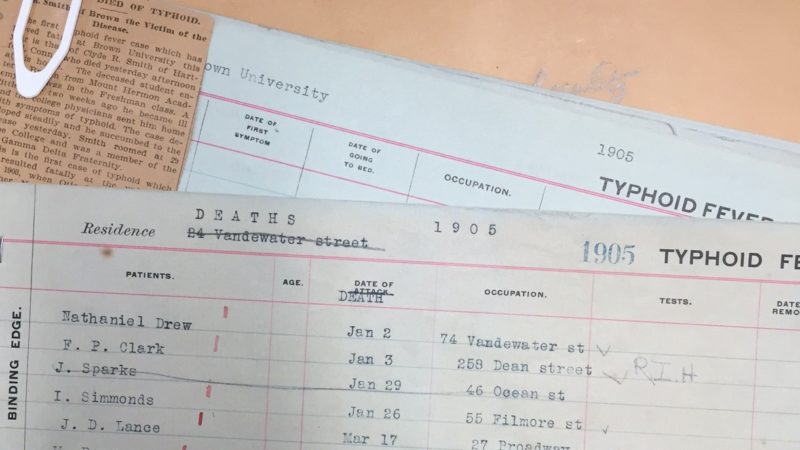
typhoid
[tahy-foid]
noun
- Also called typhoid fever. an infectious, often fatal, febrile disease, characterized by high fever, rose-colored spots on chest or abdomen, abdominal pain, intestinal inflammation and ulceration, caused by the typhoid bacillus, which is usually introduced via contaminated food or (definition from dictionary.com)
From the early 1880s to early the 1900s, typhoid fever was a major health crisis in many American cities. Native Rhode Islander, Dr. Charles Value Chapin (1856-1941) was a pioneer in fighting infectious diseases and was Superintendent of Health in Providence from 1884-1932.
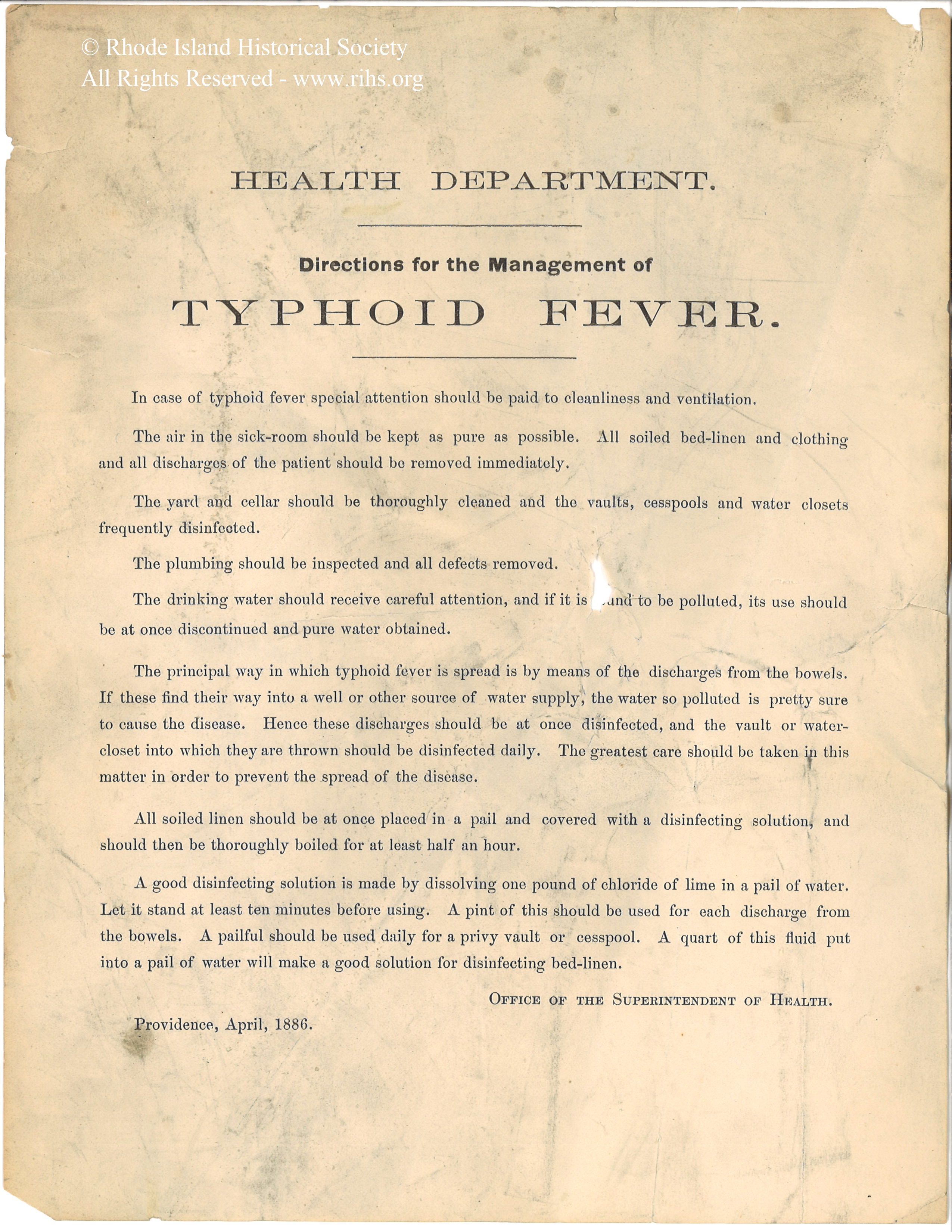
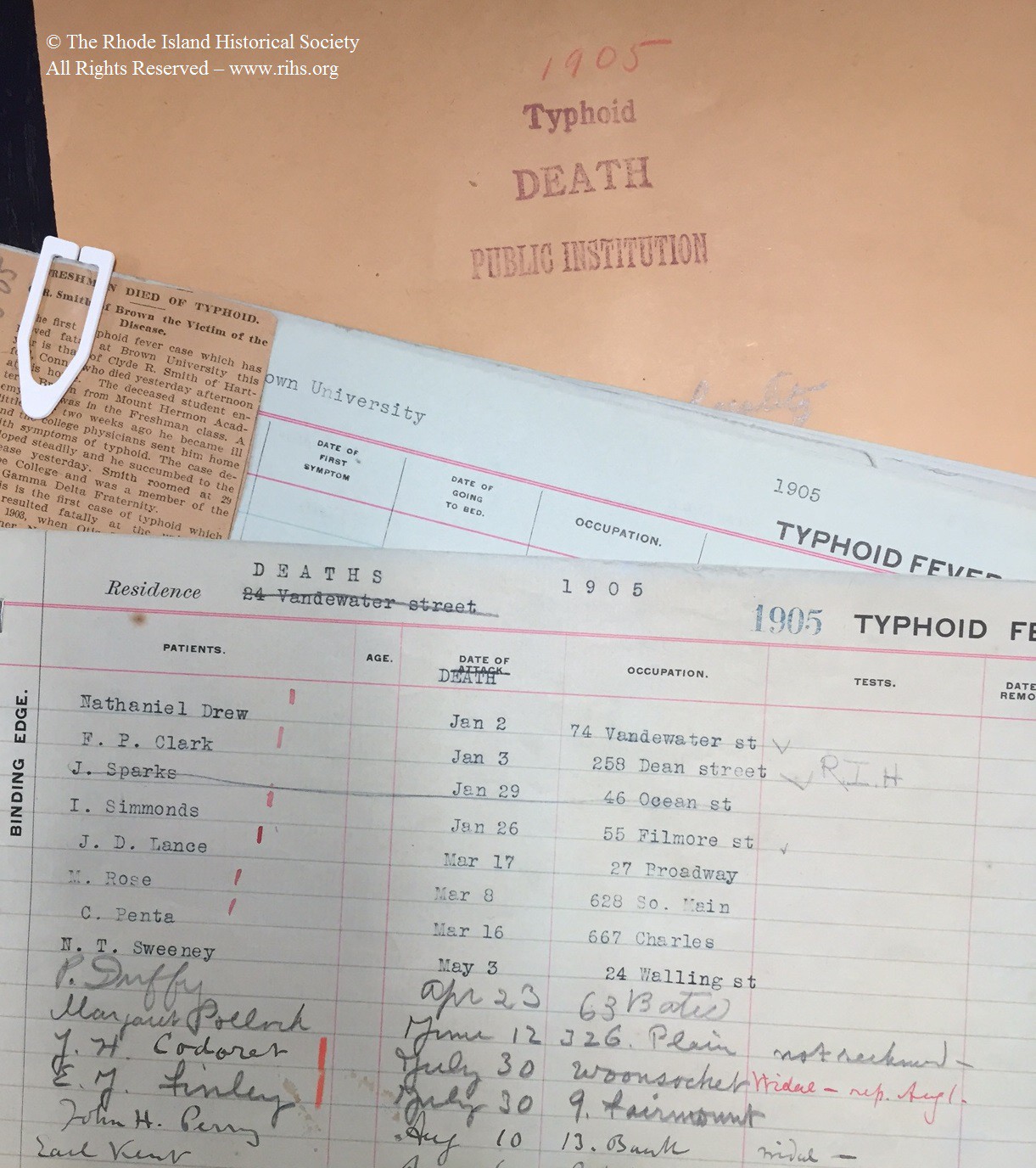
Typhoid Mary
Born Mary Mallon, she was an Irish immigrant working as a domestic cook. Typhoid outbreaks seemed to follow her from job to job until 1907 when New York Health Authorities identified her as the first known “healthy carrier” of typhoid fever. Since she had no symptoms, Mary did not understand how she could spread the disease or why she was being quarantined.
On February 19th, 1910, Mary was released from forced isolation, having spent three years in a cottage of Riverside Hospital which was located on North Brother Island, in the East River near the Bronx, New York. Although she had agreed not to, she returned to working as a cook and went on to cause several more outbreaks. After evading health authorities for five years, Mary was arrested again and returned to quarantine, in the same cottage, on March 27th, 1915. She remained in isolation until her death on November 11, 1938.
Although she never broke any specific laws, Mary was subjected to a trial, forcibly isolated for years by authorities and subjected to repeated medical testing. Many people feel that Mary was unjustly vilified and persecuted, including Dr. Chapin. He felt that surveillance would have been sufficient.
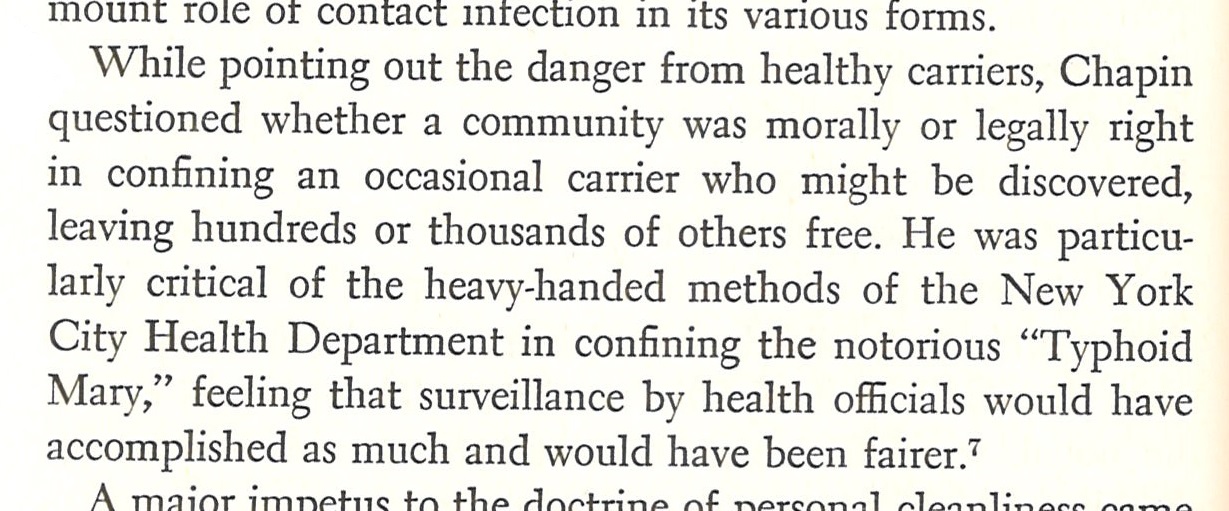
- The first step in the conquest of typhoid fever was taken when Dr. Gerhard, in Philadelphia, in 1837, discovered that typhoid fever and typhus fever are totally different diseases.
- In 1882 in Providence typhoid fever levied a death toll of 140 per 100,000, in 1922 there was not a single death.
- The most important step in its control was the discovery that it was largely spread by sewage contaminated water. It was soon learned that other food and drink may carry typhoid germs.
- The lesson of “Typhoid Mary” taught us that persons who have had typhoid fever may continue to carry the germs for years.
- The last great discovery bearing on the control of this disease was immunization by injecting typhoid vaccine.
Dr. Charles V. Chapin’s theories on public health problems have been adopted throughout the world and his work was instrumental in revising & strengthening public health laws, particularly in regards to the handling of food. His son Howard M. Chapin, (1887-1940), was the Librarian of the Rhode Island Historical Society from 1913 until his death in 1940.
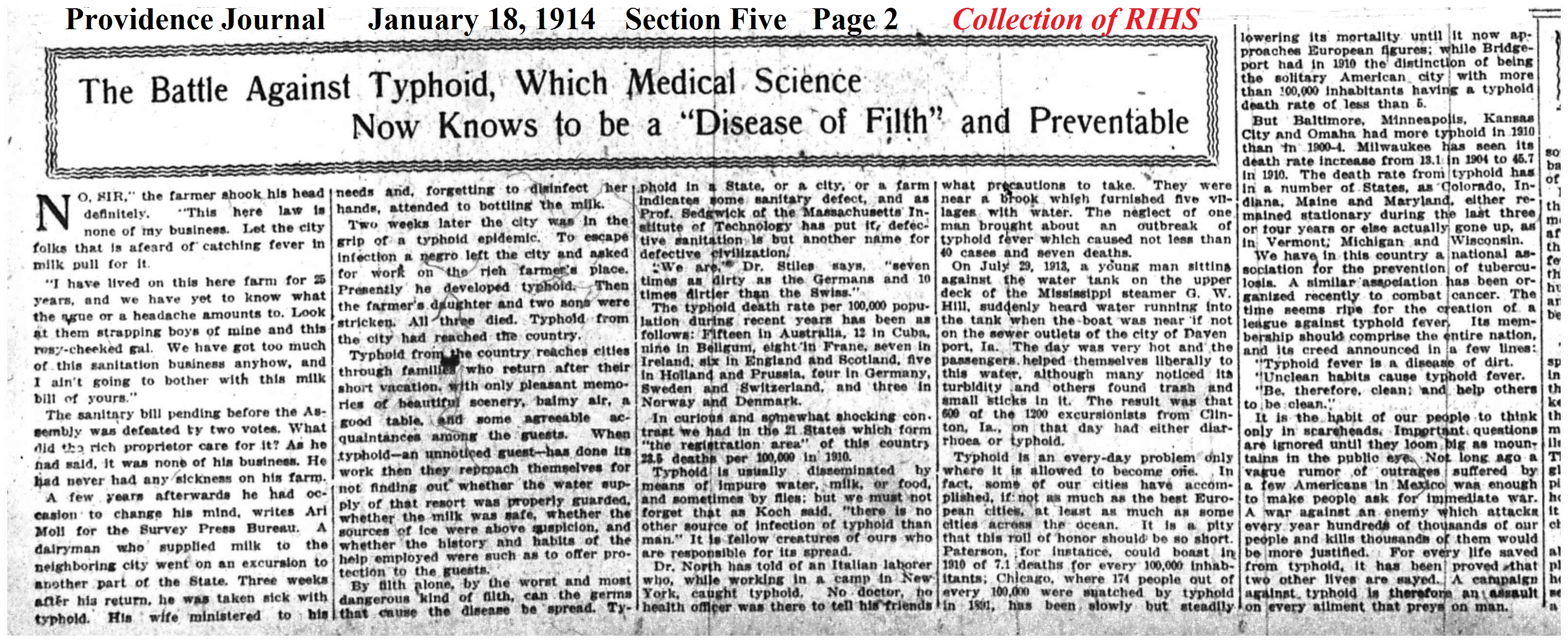
The Charles V. Chapin Papers (MSS 343) are available at the R.I.H.S. Research Center. Click here to view the finding aid for the collection.
Come back next week to read a heartbreaking first-hand account of typhoid fever.
